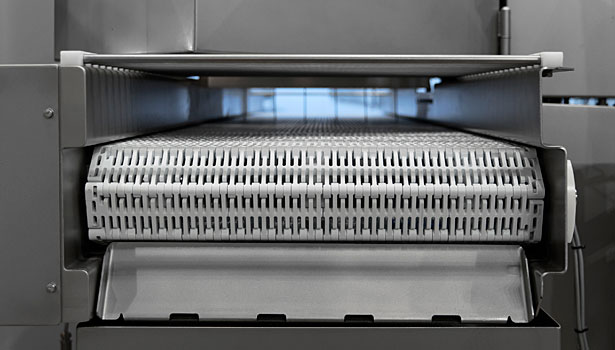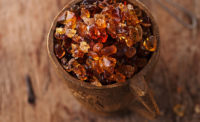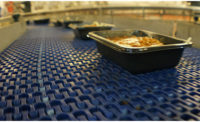Everyone knows conveyor belts are tough. But today they can withstand steam, ozone, chemicals and temperatures as high as 180ºF to 220ºF or as low as minus-40ºF.
Even the belts themselves are more durable than ever.
Proprietary and patented innovations are allowing manufacturers to produce belts resistant to harsh temperature conditions and still be used in a variety of processing scenarios, from breading, battering, frying, coating, baking, grilling, cooling and freezing, notes Wes Osburn, Ph.D., associate professor, Processed Meats Teaching and Research, Department of Animal Science, Texas A&M University, based in College Station, Texas.
“Conveyor belt manufacturers have developed belts for special applications using a variety of materials to provide both durability and sanitary design,” he says. “Special materials, such as stainless steel, polyurethane, polypropylene and silicone, are used to manufacture safe and durable belts.”
Plastic belt manufacturers, in particular, have been able to create plastic materials that are more resistant to scuffing or abrasion.
“Innovations in coining [cold metal forging] of metal to manufacture the links used for metal belts have helped to reduce break-in wear, belt elongation and increase belt life,” says Osburn.
The introduction of belts that require minimal or “zero tension” also add to a belt’s longevity.
“Innovations in belt design have allowed the production of belts that are lighter in weight but able to carry heavy loads, while also reducing system downtime for maintenance,” he says.
According to John Johnson, general manager, JBS USA, the most change he has seen with conveyor belts is in the construction of the belting material and the interface between drive mechanisms, travel supports, conveyor framing and accessibility for cleaning.
“The easier the belting is to clean, the less likelihood that there will be damage caused by prying the belt up in order to access the framework and bottom surface of the belt,” he says. So which materials are most durable in belt applications?
“All belting material is rather durable, but the key is to match the specific type of belt with the application,” says Johnson.
For example, stainless-steel wire belting is used in applications for cooking or applying a topical solution to both sides of the product where temperatures and chemicals are less adverse for the material.
“A typical flat surface belt common to the industry has specifications for load rating [weight of product, turns, length of the conveyor, etc.],” says Johnson. “In addition to the specifications are the recommended cleaning solutions in order to maintain the belts’ life.”





Report Abusive Comment